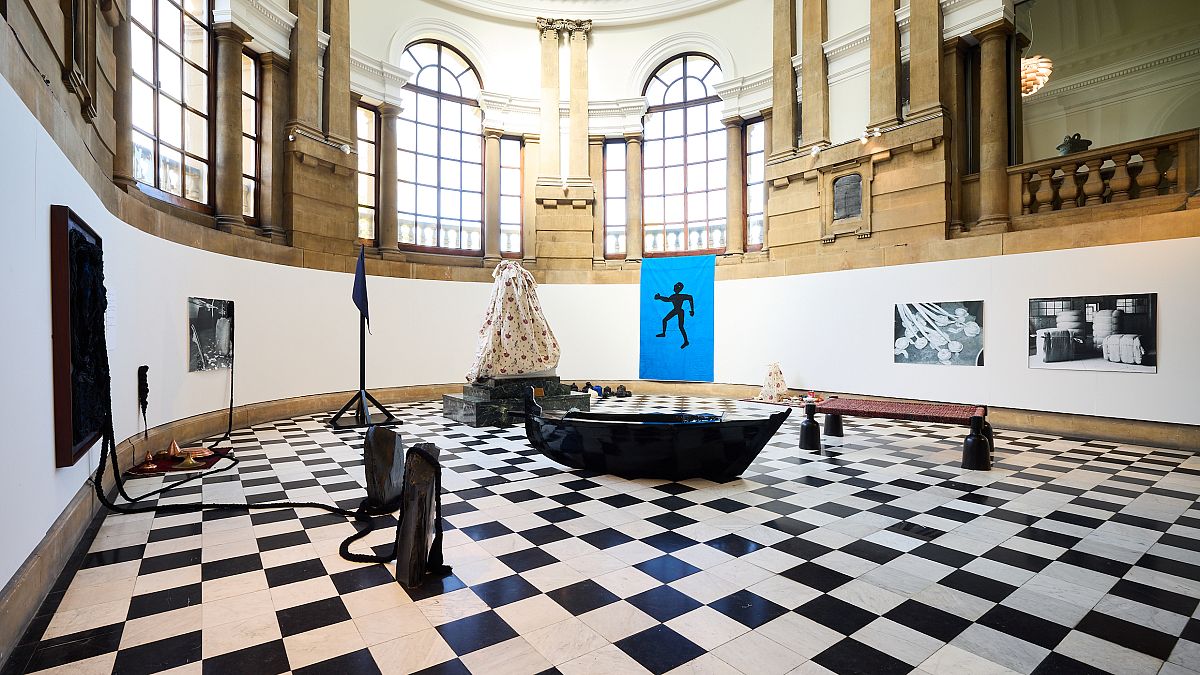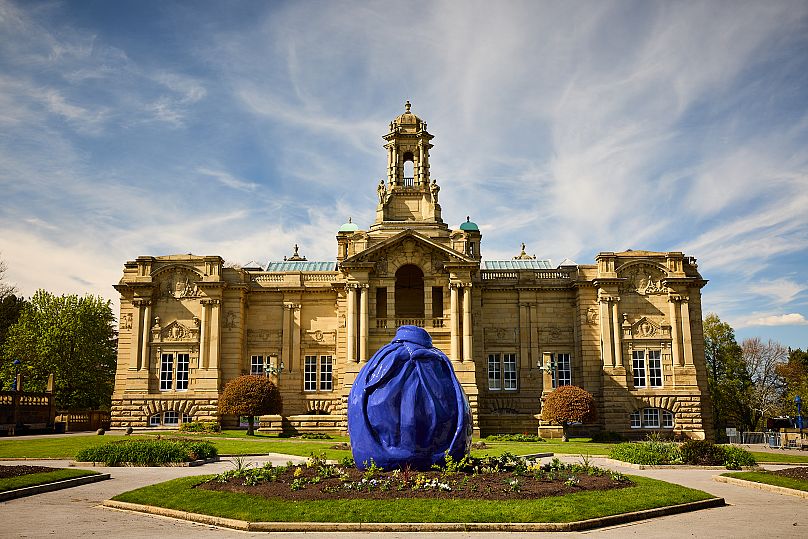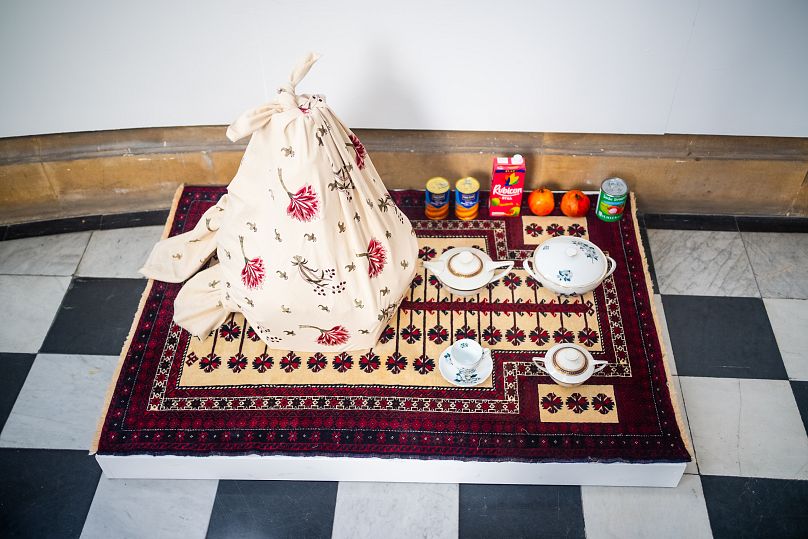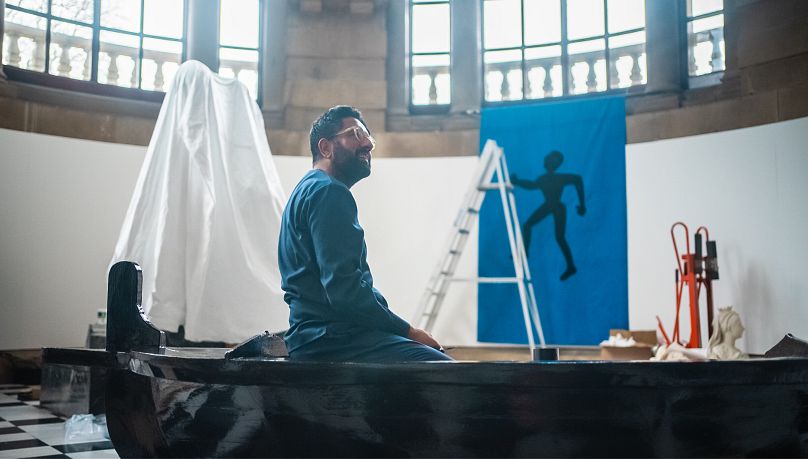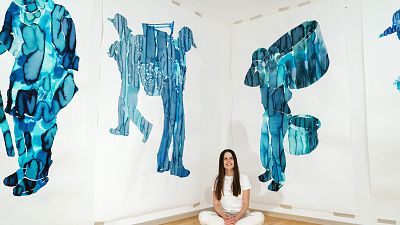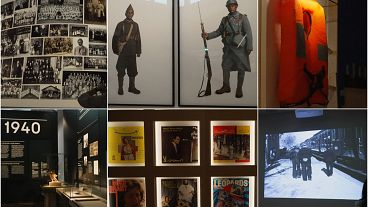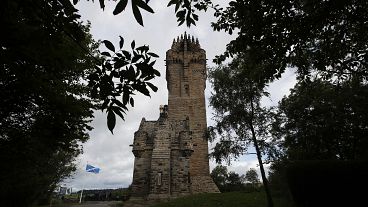Yousefzada’s show at Cartwright Hall brings marginalised voices – particularly those of immigrants and women – to the surface.
“This is not a lament, but a collective memory,” says British-Pakistani artist Osman Yousefzada, looking at his work at Bradford’s Cartwright Hall.
His solo exhibition, Where It Began, offers a profoundly personal take on questions of migration and memory, all the while engaging with universally relevant themes of labour, community and identity.
The show – which spans textiles, video and sculpture, and sees Yousefzada temporarily wrap various artworks, including a bust of Queen Victoria – is the kick-off event in the countdown to Bradford being UK City of Culture 2025.
Though Where It Began is an iteration of Yousefzada's recent solo show at the V&A, What Is Seen and What Is Not, the exhibition includes commissions created specifically for the city – including an outdoor work to be enjoyed by anyone passing through or relaxing in the hugely popular Lister Park, which surrounds Cartwright Hall.
This temporary public sculpture (the artist’s first large-scale outdoor work), created in collaboration with Bradford-based creative construction company SETSTAGE, envelops the near-iconic Diana the Huntress statue outside Cartwright Hall.
Yousefzada has his own connection with Bradford - his father arrived in the city during the wave of Commonwealth migration in the 1960s.
“His story resonates with the communities that surround this location, those communities that came to Bradford to work in the very mills that gave Bradford its wealth and its heritage and its history,” says Shanaz Gulzar, Creative Director for Bradford UK City of Culture 2025, referring to Bradford’s former status as the wool capital of the world and the (often immigrant) communities who worked to make it such.
Euronews Culture sat down with Yousefzada to speak about the show, ahead of what Gulzar promises will be an “unexpected” programme of events during Bradford UK City of Culture 2025 – as befits a city that is, itself, unexpected, she says.
Could you tell me a little about the title of the exhibition, Where It Began?
The title is really about where our shared histories begin. You rock up in a space like this – a gallery – and you don't necessarily feel that you belong here. I really wanted to look back and see where our histories overlap, where they’ve been entangled. I wanted to bring the conversation about our histories to the surface, particularly with textiles and their link to trading and colonialism. Fine objects such as chintz, which we see in the show and which informed the practice of William Morris, for example, were the bedrock of Victorian sensibility – but their trading ultimately was a kind of colonial expansion.
Have migration and displacement always been topics of particular interest to you?
Yes, I’ve always been really interested and they’re a key element of my practice. It's this idea of a search to belong. There’s always hostile language associated with migration, and I think there’s this idea of finding a space to belong, in contrast to the hostile language of those who feel you have no right to be here. With displacement comes narratives, stories that get lost – especially first generation immigrant women like my mother whose stories have been lost. What I try to do is bring those stories to the surface again, and overlooked working class stories that don't necessarily get told.
Do you have a personal link to Bradford?
My father first arrived here in Bradford and eventually moved on to Birmingham where he took root, but Bradford was his first port of call. I came here in the summers because I had cousins here – some people went to the Canary Islands, I came to Bradford.
Why do you think it’s important that such a show – dealing with the themes that it does – forms part of the countdown to Bradford UK City of Culture 2025?
I'm very honoured to do a show like this. I think this story is really about those communities and those journeys – like the one my dad made, and the friends and distant relatives who came beforehand – which haven’t really been a narrative in contemporary art practice. There's always been this idea that it's social history, but I think their traditions and their ways of being are actually a really important sort of cultural production, and important working class voices.
One of the texts I’ve written on the wall here asks “Did it began when bodies didn't require tongues?” [spelling error intentional] – referring to the cheap labour that gave Britain, and Bradford specifically, an efficient edge. But once the work is done and you’re not needed anymore, you’re almost thrown out. It’s an important conversation to have, and it's amazing for it to be one of the preludes to Bradford City of Culture.
How did you go about creating the site-specific works?
For me, making site-specific works is key. I’m asking: How does it respond to the site? How sensitive is it? What sort of conversations are we trying to have? The context is important: Bradford, from the 1960s on, got cheap labour from the Commonwealth, and that’s how it stayed competitive as wool production was ratcheting up in other parts of the world.
Ideas of power and class run through the whole space – it’s a very grand edifice. This building is very masculine, but there’s a statue of Diana the Huntress (the Roman goddess of wild animals and the hunt) outside, adorning this patriarchal space. Wrapping the statue gives the idea of the different layers of the conversation: colonial expansion – which was quite different in Roman times – patriarchy, class and power. The stories from the margins, for example about gender and immigration, come into the centre.
We’re speaking on the day of local elections in England and Wales – what do you think this show has to say about or how might it speak to a political moment, a socio-political climate such as this?
We’re very polarised and in our political encampments. I don’t know quite how we got here. I made the boat that stands in the middle of the exhibition a year and a half ago, but it’s still relevant. The boat here reflects on the calls to “Stop the boats” we hear from our leaders – we're just focused on the optics, the symbolism, but not about the problem itself or the people themselves who risk life and limb.
How does the exhibition relate to questions of gender and its role in relation to migration and displacement?
Gender is very key to the work and domesticity is actually where I really take a lot of my inspiration, from gendered roles and gendered spaces. These blur for me – in my textile works, the talismans and djinns take on roles kind of like guardians, but they don't necessarily have any gender, they have a multitude of gender qualities.
My mother used to wrap everything – food, clothes, even just in a Poundland bag. What has been very interesting is that I’ve had all of these women coming up to me and telling me that the works show the way their mothers occupied space, which is really beautiful. Their voices have never really been brought to the surface or made part of a cultural conversation.
You're also showing in conjunction with this year’s Venice Biennale. How does your show in Venice (Welcome! A Palazzo for Immigrants) relate to Where It Began in Bradford?
Venice and Bradford may seem like an unlikely pairing, but they very much speak to each other. Both cities, to some extent, are cities of immigrants and cities of trade. But it's also those domestic voices, those working class voices, and especially those female voices that don't really get documented – that’s what the show in Venice is really about too.
Who do you hope the audience for Where It Began might be?
I think it has a really cross-cultural audience. Having the sculpture placed over, wrapping the statue of Diana in the park has been really interesting. We have white working class lads next to immigrant women from Pakistan – first generation women who come from a different landscape, from rural backgrounds, and then have built a home here in Bradford and are occupying the park along with these lads. What it does is open up conversations.
Osman Yousefzada’s “Where It Began” runs at Bradford’s Cartwright Hall Art Gallery from 3 May – 13 October 2024.
Osman Yousefzada, WELCOME! A PALAZZO FOR IMMIGRANTS, Curated by Nadja Romain and Amin Jaffer and presented by Fondazione Berengo in partnership with the Victoria & Albert Museum at Palazzo Franchetti, Venice, runs from 17 April – 7 October 2024.
